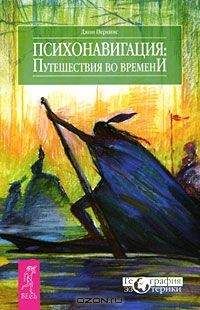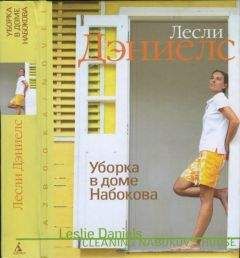Мы стоим в тишине. Луна очень близко.
— Она пришла туда с Земли, — говорит он, — из великого океана на западе.
— Я слышал эту легенду. Луна оторвалась от Земли миллионы лет назад. Гравитация удерживает ее как пуповина.
— Она имеет огромную власть над всем, что есть на Земле.
— Ты имеешь в виду приливы?
— Приливы. Погода. Внутренние ритмы людей, животных и растений. Силы, лежащие за пределами нашего понимания.
— Да. Согласен.
Я чувствую, что он повернулся ко мне. Наши глаза встречаются, и я вижу его мягкую улыбку.
— Когда душа странствует, не покидает ли она тело, как когда-то Луна покинула Землю? Теряет ли душа связь с телом, когда она очень далеко?
На мгновение я вижу, что сижу на коврике во внутреннем дворике, прижавшись к колонне.
— Разумеется, нет.
Мне надо немного подумать, вспомнить обложки журналов и фотографии Земли, сделанные с Луны, фильм, показанный на белой стене. Кажется, это было так давно…
— Когда астронавты высадились на Луне, мы навсегда изменили свое отношение к жизни. Мы начали понимать, как мы уязвимы, как изолированы, как малы и ограничены наши ресурсы. Мы поняли, что Земля — это всего лишь космический корабль.
— И как все это связано с психонавигацией?
— Душа отправляется в странствие, находит путь, запоминает ориентиры и возвращается обратно, чтобы рассказать об этом телу. Тело может следовать за этими ориентирами. К ягуару, острову вдали, здоровью, изобретению электрической лампочки или к написанию новой главы для этой книги.
Он пристально смотрит на меня, а затем его глаза возвращаются к Луне.
— Пойдешь ты к этим ориентирам, или нет, решать тебе.
Я не знаю, что еще сказать. Я смотрю то на него, то на Луну. После долгого молчания я говорю только: «Мама Килья».
— Сядь, пожалуйста. Сосредоточься на Луне. Увидь ее. Прикоснись к ней. Слушай ее. Попробуй отключить сознание. Используй тело и свой дух. Вспомни о том, как возникла Луна, как она влияет на нас, что может поведать. Если она могла говорить с астронавтами, то сможет говорить и с тобой.
Я расслабляюсь. Я пытаюсь освободиться от всего, что меня отвлекает. Когда, наконец, удается сосредоточиться на Луне, тишину нарушает протяжный мяукающий рык, от которого кровь стынет в жилах.
— О, Боже! Что это было?
— Что?
— Ты не слышал? — бормочу я, вспоминая ту ночь в Эль-Милагро, еще до того, как земля превратилась в глиняный горшок. — Ты не слышал этот крик ягуара?
Он странно на меня смотрит:
— Ягуар? Они водятся только в джунглях. Ты знаешь это. Здесь нет ягуаров.
— Но я слышал…
— Мама Килья, — улыбается он.
Луна. Это кажется нелепым. Тень набегает на серебряный шар, и я снова слышу этот протяжный рык. Маноло кивает.
— Да, — говорит он. — Ты слышал Маму Килью. Она говорила с тобой.
Alexander, F. Psychosomatic Medicine. New York: Norton, 1950.
Allison, J. Respiration changes during transcendental meditation. Lanceti, 1970, 833–834.
Andrews, L. Jaguar Woman and the Wisdom of the Butterfly Tree. San Francisco: Harper & Row, 1986.
Bach, R. Illusions: The Adventures of a Reluctant Messiah. New York: Dell, 1977.
Benson, H. Beyond the Relaxation Response. New York: Times Books, 1984.
––—––. The Relaxation Response. New York: Morrow, 1975.
Blair, L, with Blair, L. Ring of Fire: Exploring the Last Remote Places of the World. New York: Bantam Books, 1988.
Bower, B. Shaping up your mind. Science News 126 (August 2, 1986): 75.
Buscaglia, L. The Way of the Bull. New York: Ballantine Books, 1983.
Castaneda, C. The Eagle's Gift. New York: Simon and Schuster, 1981.
Castaneda, C. The Teachings of Don Juan: A Yaqui Way of Knowledge. Los Angeles: University of California Press, 1968.
Chan, W. A Source Book in Chinese Philosophy. Princeton, N.J.: Princeton University Press, 1963.
Chang, C. Y. Creativity and Taoism. New York: Julian Press, 1963.
Chatwin, B. The Songlines. New York: Penguin Books, 1988.
Colby, N. and Colby, L. The Daykeeper. Cambridge, Ma.: Harvard University Press, 1981.
Crichton, M. Travels. New York: Alfred A. Knopf, 1988.
Dossey, L. Space, Time and Medicine. Boston: New Science Library, 1982.
Fisher, R. A cartography of the ecstatic and meditative states. Science 174 (1971): 897–904.
Gartelmann, К. Digging Up Prehistory: The Archaeology of Ecuador. Quito: Ediciones Libri Mundi, 1986.
Herdt, G. Guardians of the Flutes: Idioms of Masculinity. New York: Columbia University Press, 1987.
Holmes,Т. H., and Rahe, R. H. The social readjustment rating scale. Journal of Psychosomatic Research 11(1967): 213.
Jacobson, E. Progressive Relaxation. Chicago: University of Chicago Press, 1938.
James, E. Attaining the Mastership: Advanced Studies on the Spiritual Path. Atlanta: Dhamma Books, 1988.
Jana, H. Energy metabolism in hypnotic trance and sleep. Journal of Applied Physiology 20 (1965): 308–310.
Johnston, W. Christian Zen. New York: Harper & Row, 1971.
Jung, C. Memories, Dreams, Reflections. New York: Vintage Books, 1961.
Kaplan, J. Pressure points… Active answers. Vogue (August 1987): 353.
Katkin, H. S., and Murray, E. N. Instrumental conditioning of autonomically mediated behavior: Theoretical and methodological issues. Psychological Bulletin 70 (1968): 52–68.
Kuhlewind, G. Stages of Consciousness: Meditations on the Boundaries of the Soul. New York: Inner Traditions and Stockbridge, Ma. Lindisfarne Press, 1984.
Laszlo, E. Introduction to Systems Philosophy — Toward a New Paradigm of Contemporary Thought. Foreword by Ludwig von Bertalanffy. New York: Harper Torchbooks, 1973.
Lawlor, R. Earth Honoring: The New Male Sexuality. Rochester, Vt: Park Street Press, 1989.
LeShan, L. How to Meditate. New York: Little, Brown, 1974.
Udell, L., Rabinovitch, N., and Rabinovitch, G. The Sivananda Companion to Yoga. New York: Simon and Schuster, 1983.
Luthe, W., ed. Autogenic Therapy. Vols. 1–5. New York: Grune and Stratton, 1969.
May, R. The Courage To Create. New York: Norton, 1975.
Mclntyre, L. The Incredible Incas and their Timeless Land. Washington, D.C.: National Geographic Society, 1975.
McKenna, M. Revitalize Yourself! The Techniques of Staying Youthful. New York: Hawthorn Books, 1972.
Monroe, R. Journeys Out of the Body. New York: Doubleday, 1971.
Moss, G. E. Illness, Immunity, and Social Interaction: The Dynamics of Biosocial Resonation. New York: 1973.
Naranjo, C, and Ornstein, R. E. On the Psychology of Meditation. New York: Viking Press, 1971.
Needleman, J. The New Religions. Garden City, N.Y.: Doubleday, 1970.
Organ, T. W. The Hindu Quest for the Perfection of Man. Athens, Ohio: Ohio University Press, 1970.
Ornstein, R. E. The Psychology of Consciousness. San Francisco: W. H. Freeman, 1972.
Perkins, J. The Stress-Free Habit: Powerful Techniques for Health and Longevity from the Andes, Yucatan, and Far East. Rochester, Vt.: Healing Arts Press, 1989.
Pilkington, R. Cyberphysiology in children. Advances: Journal of the Institute for the Advancement of Health. Vol. 5, № 4 (1988), 66–69.
––—––. Relaxation really works. Psychology Today (January 1987): 68.
Scotch, N. A. Sociocultural factors in the epidemiology of Zulu hypertension. American Journal of Public Health and the Nation's Health 53 (1963): 1205–1213.
Sheldrake, R. A New Science of Life: the Hypothesis of Formative Causation. Los Angeles: Jeremy P. Tarcher, Inc., 1987.
Singh, D. Spiritual Awakening. Bowling Green, Va.: Sawan Kirpa Publications, 1986.
SlocumJ. Sailing Alone Aroundthe World. New York: Dover Publications, 1956.
Spalding, B. Life & Teachings of the Masters of the Far East. Vols. 1–3. Marina Del Rey, Ca.: DeVorss & Co., 1944.
Triminham, J. S. Sufi Orders in Islam. Oxford: Clarendon Press, 1971.
Villoldo, A. and Krippner, S. Healing States (A Journey into the World of Spiritual Healing and Shamanism). New York: Simon & Schuster, 1987.
Van Hagen, V. The Ancient Sun Kingdoms of the Americas. London: Thames & Hudson, 1962.
Wakefield, C. High Cities of the Andes. San Carlos, Ca.: Wide World Publishing/Tetra, 1988.
Wallace, R. K., and Benson, H. The physiology of meditation. Scientific American 226(1972): 84–90.
Wood, C. Herpes: Think positive. Psychology Today (December 1986): 24.



